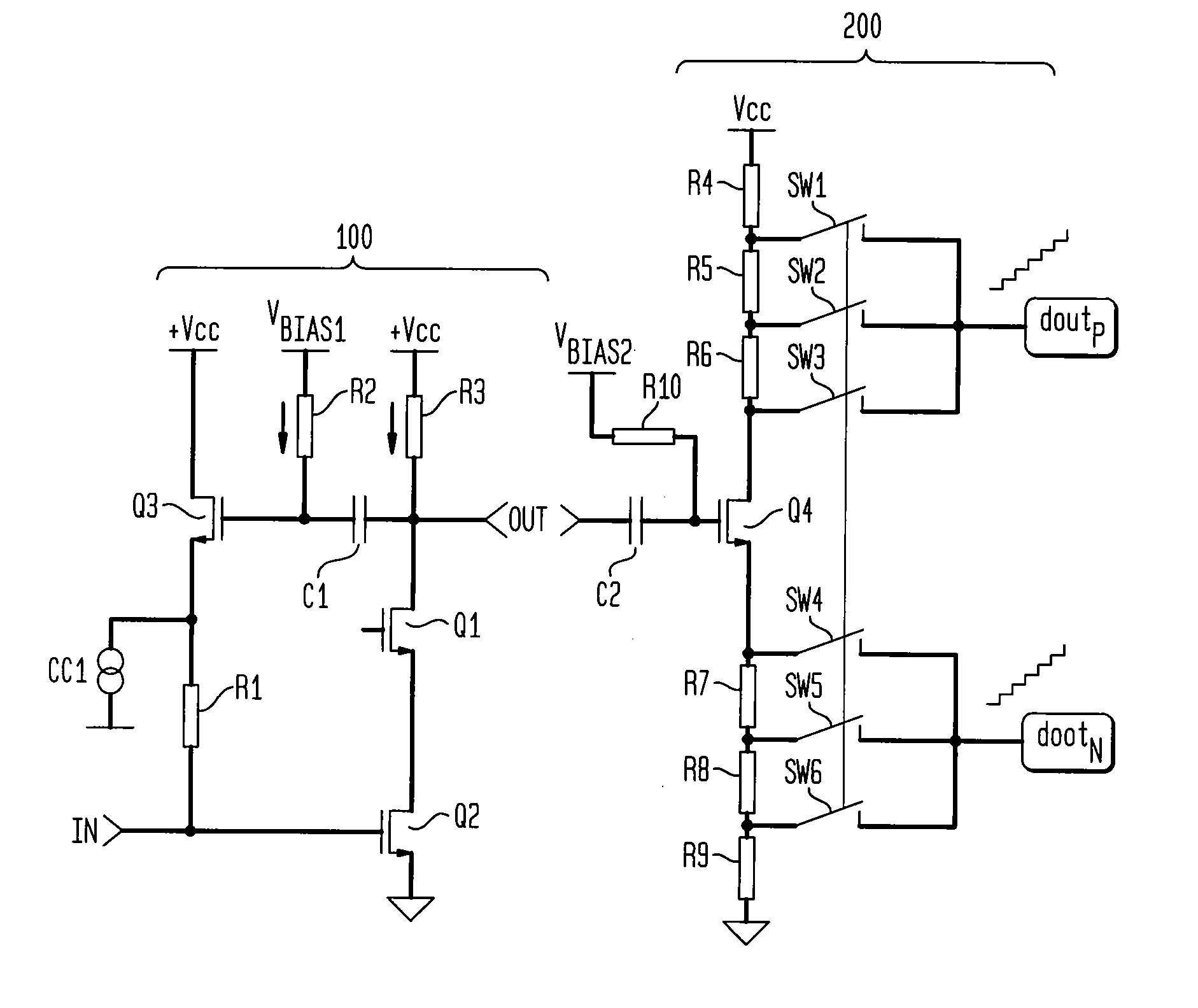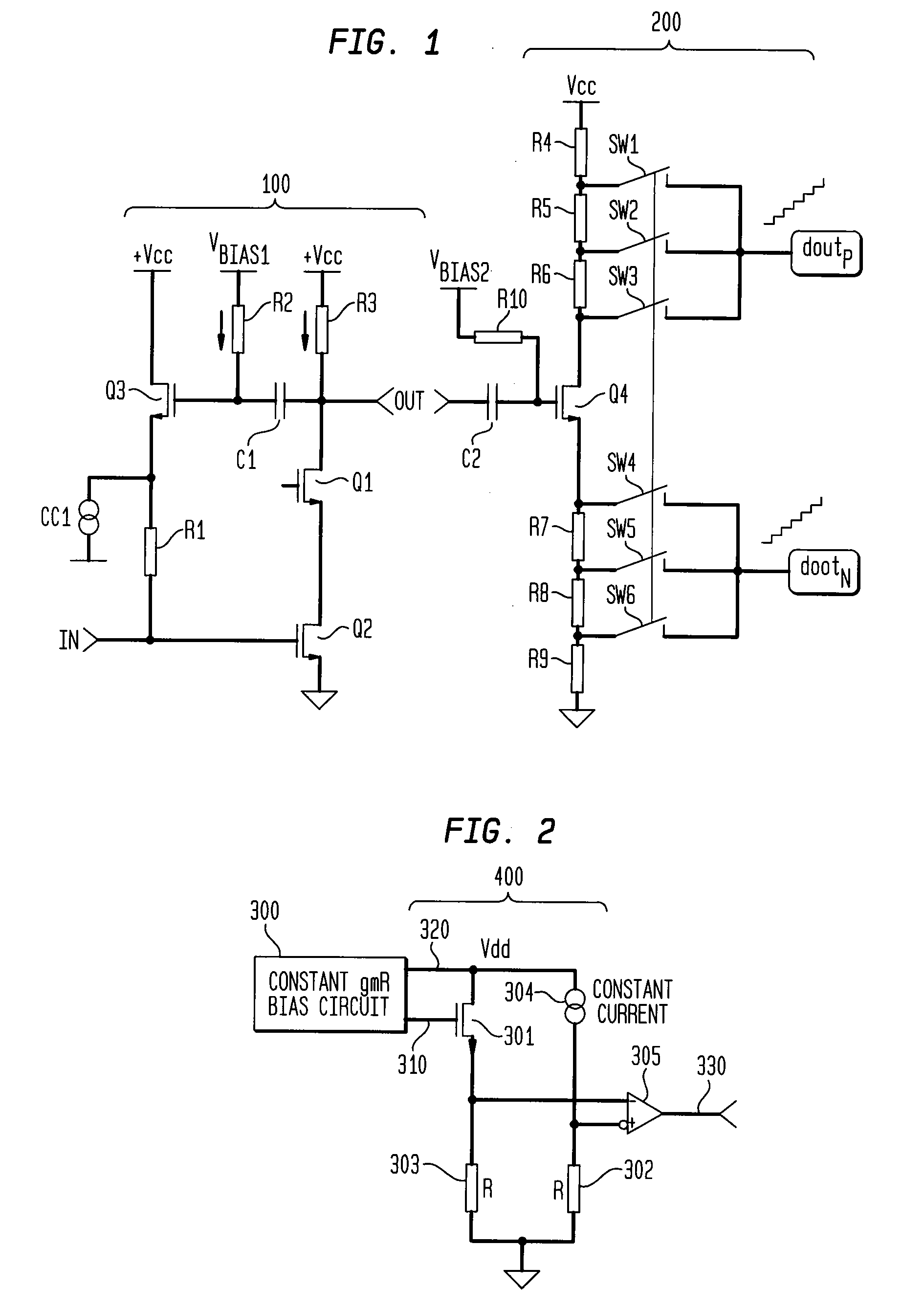Low Noise Amplifier
- Summary
- Abstract
- Description
- Claims
- Application Information
AI Technical Summary
Benefits of technology
Problems solved by technology
Method used
Image
Examples
Embodiment Construction
[0011]FIG. 1 illustrates an example of a low noise amplifier 100 and a conversion stage 200 according to an aspect of the invention. The low noise amplifier 100 of FIG. 1 is an example of a common-source amplifier in which the input signal IN is applied to the gate of a second transistor Q2 to control the signal-drain current. The output signal OUT is sensed across a third resistor R3 which is connected between a supply voltage Vcc and the drain of the transistor Q2. The third resistor R3 can be replaced by a bank of resistors which can be selected and act as a coarse gain for the low noise amplifier 10. Typically the selection of the resistors allows the course gain to be selected in steps of 6 dB, but this is not limiting of the invention. A first transistor Q1 is placed between the third resistor R3 and the drain of the second transistor Q2. The first transistor Q1 is a cascade transistor as known in the art and is used to isolate parasitic capacitance associated with the second ...
PUM
 Login to View More
Login to View More Abstract
Description
Claims
Application Information
 Login to View More
Login to View More - R&D
- Intellectual Property
- Life Sciences
- Materials
- Tech Scout
- Unparalleled Data Quality
- Higher Quality Content
- 60% Fewer Hallucinations
Browse by: Latest US Patents, China's latest patents, Technical Efficacy Thesaurus, Application Domain, Technology Topic, Popular Technical Reports.
© 2025 PatSnap. All rights reserved.Legal|Privacy policy|Modern Slavery Act Transparency Statement|Sitemap|About US| Contact US: help@patsnap.com


